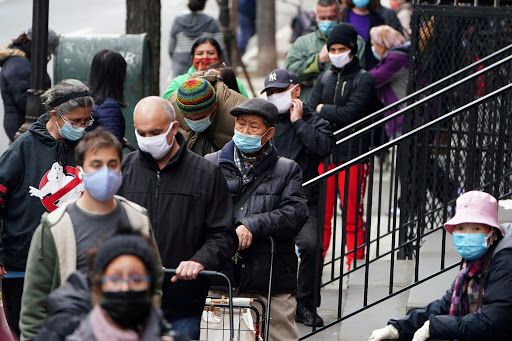What’s in the US$900 billion stimulus package and is more relief soon to follow?

A few minutes every morning is all you need.
Stay up to date on the world's Headlines and Human Stories. It's fun, it's factual, it's fluff-free.
Though a US$2,000 stimulus check has yet to end up in the hands of Americans, the possibility of that happening in the future is looking more likely after the victory of Democratic candidates Raphael Warnock and Jon Ossoff in the Georgia runoff elections on January 5.
Less than a week before Christmas, the United States Congress passed a national stimulus package that would provide US$900 billion in federal aid to the economy, including relief checks to most Americans.
But as the stimulus money winds its way to citizens across the nation, many find themselves asking if the US$600 in the checks is enough for having endured 10 months of economic hardship.
What the bill has
Democrats have been staunch supporters of larger stimulus packages throughout the pandemic, originally arguing for this package to be around US$2 trillion, more than double its final size. This support included prioritizing unemployment benefits, increasing individual payments and extending eviction moratorium.
However, Republicans argued that such actions would increase the national debt and argued instead for small business loans and a reopening of the economy. Senate Majority Leader Mitch McConnell held firm that the second stimulus should not exceed US$500 billion.
The final version of the bill included smaller direct payments, extended unemployment benefits and small business loans, as well as funding for schools and hospitals. It also contained a notable amount of money for vaccine distribution.
The bill was attached to a federal funding bill that would allow the government to operate through September 2021. The combination of bills provided a total of US$2.3 trillion in federal funding.
What the bill doesn’t have
The relief package does not include certain things that many believe would be beneficial not only to individuals and families struggling financially due to unemployment, but also to businesses.
The most tangible part of the small relief package are the direct checks that many consider too small. According to a Business Insider poll, 62% of Americans believe that the US$600 checks are too small and 76% think the checks should be greater than US$1,000.
The stimulus checks are intended in part to go to people hit the hardest by the virus, namely those who were either furloughed or laid off. In November, more than 10 million Americans were unemployed. Vermont Senator Bernie Sanders has claimed that bigger checks are “a matter of life and death.”
The other major omission from the relief package was state and local aid, a major issue for states already drastically underfunded. New Jersey Governor Phil Murphy called the lack of state and local funding “unfathomable” in an interview with The Washington Post. New Jersey has already had to borrow billions to make up for the expected drop in state revenue as a result of the coronavirus pandemic.
The lack of state and local funding comes as a particularly critical blow as states have been left to enact mask mandates, enforce curfews and take other measures on their own.
Trump’s reaction
The day after the bill was passed in Congress, President Donald Trump gave a speech calling the bill a “disgrace” and, going against party lines, demanded that the stimulus checks included in the bill be larger.
This move divided Republicans on Capitol Hill, but left many Democrats in the rare position of agreeing with the president. House Speaker Nancy Pelosi tweeted that “The House and the President are in agreement.”
The opportunity to issue larger checks was ultimately stymied by Senate Majority Leader Mitch McConnell.
What comes next
Though a US$2,000 stimulus check has yet to end up in the hands of Americans, the possibility of that happening in the future is looking more likely after the victory of Democratic candidates Raphael Warnock and Jon Ossoff in the Georgia runoff elections on January 5. Thanks to their victories, the Senate will enter its upcoming session in a 50/50 tie, meaning that Vice President-elect Kamala Harris will cast the deciding vote on who should run the chamber, thus handing control to the Democrats.
With Democratic control of the House, Senate and White House following the January 20 inauguration of President-elect Joe Biden, the passing of a larger COVID-19 relief bill appears to be imminent.
Have a tip or story? Get in touch with our reporters at tips@themilsource.com




Comments ()